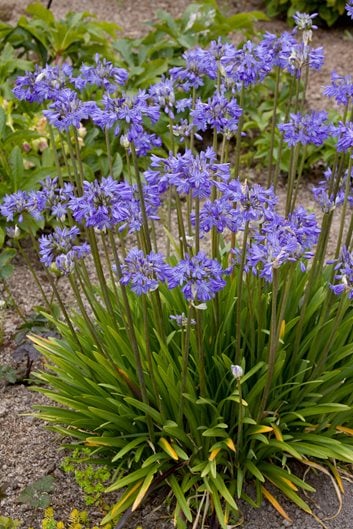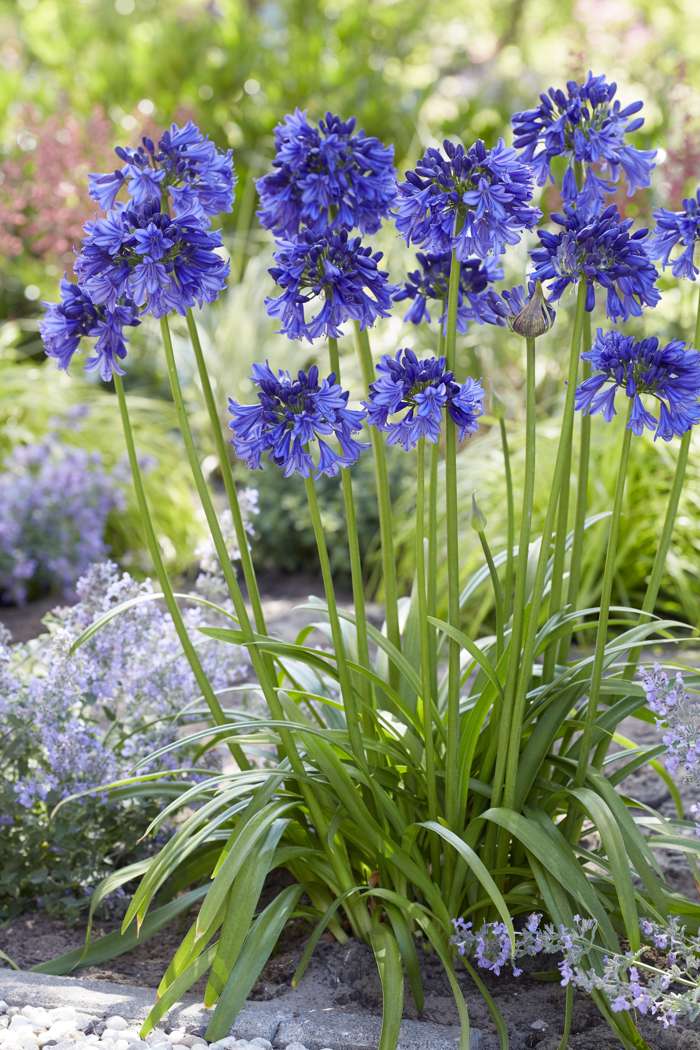Usual Agapanthus Problems and Just How to Resolve Them
Usual Agapanthus Problems and Just How to Resolve Them
Blog Article
Letting Loose the Secret to Successful Agapanthus Farming: Idea for a Flourishing Yard
In the world of gardening, growing agapanthus effectively calls for a tactical method that encompasses numerous aspects of plant care. By recognizing the nuances of agapanthus growing, one can develop an atmosphere where these plants grow and bloom abundantly.
Planting Agapanthus: Finest Practices
When growing Agapanthus, appropriate dirt prep work is essential for making certain successful growth and development of these stunning blossoms. Agapanthus, frequently understood as Lily of the Nile or African lily, thrives in well-draining dirt with a slightly acidic to neutral pH level - Agapanthus. Before growing, it is critical to change hefty clay soils with natural issue such as compost or peat moss to enhance drainage and provide essential nutrients for the plants
To plant Agapanthus, pick an area that receives complete sunlight to partial shade, as this will certainly advertise healthy growth and bountiful blooming. Dig a hole two times the diameter of the plant's origin sphere and position the Agapanthus at the same depth it was formerly growing. Delicately backfill the hole with dirt, pushing down strongly to eliminate any kind of air pockets around the roots.
Water the newly planted Agapanthus extensively and remain to keep the dirt uniformly damp, especially during the plant's active expanding period. Agapanthus. Using a balanced fertilizer once a month can additionally support the plant's development and blooming. By complying with these best techniques for planting Agapanthus, you can create a stunning screen of these fascinating flowers in your yard
Ideal Soil Issues for Agapanthus
For optimal growth and flowering success of Agapanthus plants, guaranteeing the dirt problems are excellent is vital. Agapanthus favors dirt that is abundant in nutrients, so including a balanced fertilizer throughout the growing season can promote healthy growth and dynamic blooms.

Watering and Fertilizing Tips
To ensure healthy growth and lively blooms, appropriate watering and feeding methods are vital for effective Agapanthus cultivation. Agapanthus plants profit from normal watering, particularly during the growing season.
When it comes to fertilizing Agapanthus, a well balanced fertilizer with equal components nitrogen, phosphorus, and potassium can be applied in the springtime to promote healthy and balanced growth and blooming. Slow-release fertilizers are suitable for providing nutrients gradually over an extended duration. Avoid over-fertilizing, as this can cause too much vegetation development at the expenditure of blooms.
Furthermore, integrating raw material like compost into the soil can enhance nutrient levels and improve dirt framework, assisting in the total health and wellness of the Agapanthus plants. By adhering to these watering and fertilizing suggestions, gardeners can guarantee their Agapanthus plants prosper and produce spectacular screens of blog here blossoms.
Trimming and Deadheading Methods
Proper trimming and deadheading strategies play an important role in preserving the wellness and aesthetics of Agapanthus plants, matching the important methods of watering and feeding for effective cultivation. Trimming Agapanthus entails getting rid of spent blossom heads, dead or yellowing fallen leaves, and overall shaping of the plant to advertise much better growth. Deadheading, the procedure of eliminating faded flowers, not just enhances the plant's appearance however likewise motivates more flowering.
When deadheading Agapanthus, it is a good idea to trim off the blossom stem at the base utilizing sharp, tidy shears. This procedure redirects the plant's power from her comment is here seed manufacturing back into root and foliage development, advertising a much healthier and extra robust plant. Normal deadheading can expand the blooming duration of Agapanthus and avoid self-seeding, which can lead to congestion.
In regards to pruning, Agapanthus normally advantages from a light trim after blooming to clean up the plant and motivate fresh growth. Cutting down the invested flower stems and getting rid of any type of dead or broken vegetation assists preserve the plant's vitality and general look. Nonetheless, it is vital to prevent cutting right into the crown of the plant, as this can weaken its wellness.

Protecting Agapanthus From Vermins and Diseases
Applying reliable bug and illness management methods is important to guarding the wellness and vigor of Agapanthus plants in growing. Agapanthus are generally hardy plants, but they can still come down with numerous pests and diseases if not properly looked after. One typical insect that impacts Agapanthus is the Agapanthus borer, a caterpillar that tunnels into the plant, triggering damage to the leaves and flowers. To avoid infestations, normal inspection of the plants is crucial. If borers are spotted, they can be manually gotten rid of, or insecticidal soap can be used as a control action.
Along with pests, Agapanthus are susceptible to conditions such as origin rot and fungal fallen leave areas. These issues can frequently be protected against by making sure appropriate drainage and preventing overwatering. If signs of illness appear, impacted components of the plant need to be quickly eliminated to protect against more spread. Fungicides may likewise be made use of as a therapy measure, adhering to the maker's instructions meticulously. By remaining attentive and dealing with insect and condition concerns quickly, gardeners can assist their Agapanthus prosper and grow.

Verdict
To conclude, successful growing of agapanthus needs correct growing methods, perfect dirt conditions, adequate watering and feeding, normal trimming and deadheading, and defense from diseases and insects. By adhering to these ideas and tricks, gardeners can make certain a flourishing garden loaded with attractive agapanthus blooms. Agapanthus. Keep in mind to preserve regular treatment and attention to information to advertise the health and long life of these stunning plants
When planting Agapanthus, correct soil preparation is necessary for guaranteeing effective development and development of these stunning flowers.Water the newly planted Agapanthus completely and proceed to keep the soil uniformly damp, specifically during the plant's active growing season.For ideal development and blooming success of Agapanthus plants, making sure the soil problems are ideal is vital. When hair transplanting or planting Agapanthus, ensure the soil is well-prepared to supply the required foundation for the plants to news develop themselves successfully. One typical insect that influences Agapanthus is the Agapanthus borer, a caterpillar that passages into the plant, creating damages to the flowers and leaves.
Report this page